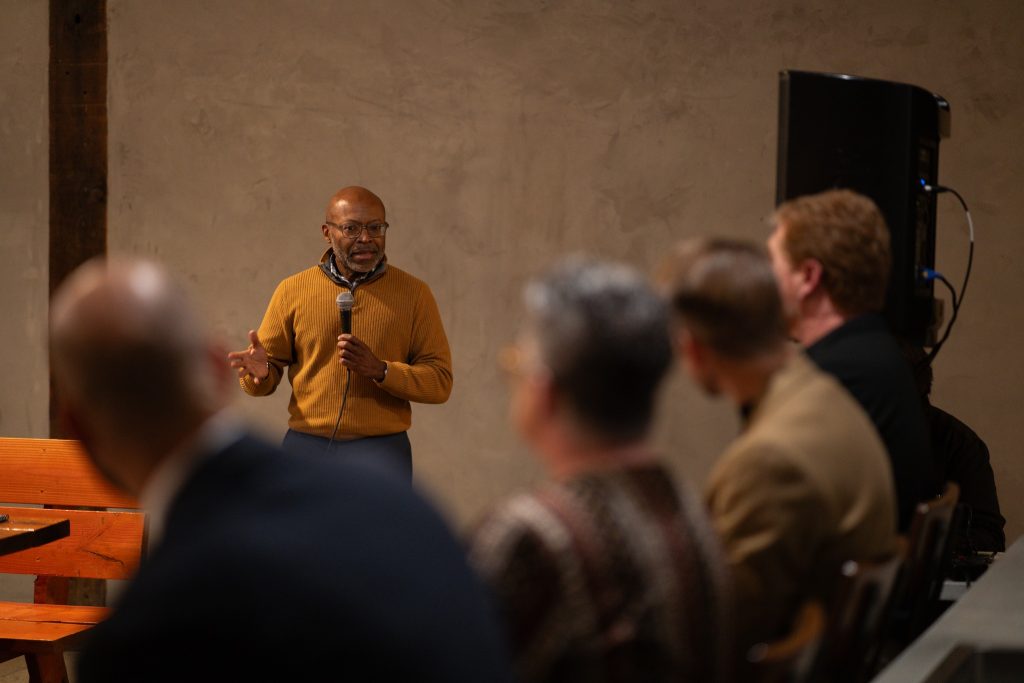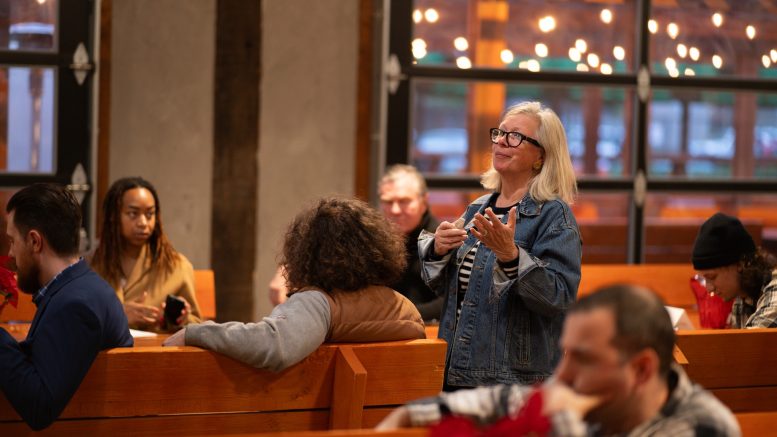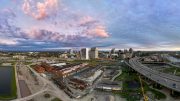Housing, homelessness and safety identified as areas of focus during “Suds & Solutions” event
By Cristian Gonzalez
Experts and community members convened at Touchstone Brewing Company for Solving Sacramento’s “Suds & Solutions” talk on revitalizing downtown Sacramento in a post-pandemic economy, on Wednesday evening, March 27.
Housing, homelessness and the perception of downtown Sacramento as unsafe were noted as obstacles to revitalization efforts. Attendees echoed similar concerns about the health of small businesses and residential areas.
“When my husband and I were looking to open the bookstore on K Street, Capital Books, I had said absolutely not downtown. It scared me. I didn’t want to have a store there,” Heidi Rojek, co-owner of Capitol Books, said. “As soon as we met with the Downtown Partnership, my mind was changed. We saw all the great things that were starting to happen downtown, and we saw that that was going to be a special place.”
Since Capital Books opened in 2019, Sacramento has seen the expansion of the SAFE Credit Union Convention Center and the booming of the Golden 1 Center, contributing to the revitalization of the downtown area.
Still, there is an unfulfilled need for more small businesses and locally owned eateries, as well as housing that could bring more people into the heart of Sacramento. This was echoed by some members of the audience.
“When I lived downtown, I lived in an apartment building next to a bookstore and a restaurant, and there was a bakery on the corner and there was a chocolate shop next to it,” Jennifer Basye Sander, an attendee, said. “And then the city of Sacramento decided ‘No, no, no, more important to bulldoze all of that, and build and expand the convention center.’”
As Sacramento evolves, Scott Ford, economic development director of Downtown Sacramento Partnership, called for a reevaluation of how Sacramento uses space downtown, embracing a diverse blend of functions that can enhance livability. He pointed out that the pandemic fundamentally changed the nature of downtown, as state buildings emptied of workers who have yet to return in high numbers.
“The old model of downtown Sacramento is no longer relevant,” Ford said. “Think about how we can reimagine a much more diversified mix of uses that’s gonna be much more like East Coast cities, like European cities, like other parts of the world that are much older than Sacramento that have probably gone through several disruptive forces, and they’ve grown in a way that is ultimately more sustainable and livable.”

A big part of that evolution, panelists agreed, would be to involve the development of more housing downtown. Panelist Ryan Cassidy, vice president of real estate at Mutual Housing California, spoke about two big projects currently underway in the city’s central core — 150 senior units at The Wong Center opening in June, and a redevelopment on 8th and R Street that will offer 242 units of affordable housing.
Devin Strecker, executive director of the River District, advocated for urban revitalization through increased downtown residency. He stressed the relationship between population influx and urban core density.
“I think the more people that we have closer to downtown, the more people will come down here,” Strecker said. “We also need to just focus on densifying the urban core, which is another big part of it, but I think we need both of those things happening at the same time.”
One challenge to increasing downtown residency is the lack of single-family homes, forcing families to look elsewhere for housing.
“Market rate apartments thrive because they’re small and dense and they can generate a lot of income. So studios, one bedrooms, two bedrooms occasionally, but not much more than that,” Cassidy said. “What that does is it forces families to leave.”
Ford noted, however, that with the changing demographics of childless adults increasing, residential carpeting may soon start to look very different.
The identity of downtown areas can be shaped by the presence of creative professionals, creating a more appealing place for visitors to frequent.
Shira Lane, executive director of Atrium 916 in Old Sacramento, said that creatives serve a crucial role in the downtown economy, yet existing economic strategies overlook their contributions.
“We talked a lot about creativity, how important creativity is — the value of creativity — but we need to figure out how creatives can retain the value that they bring to a place,” Lane said. “Right now, in all the economic development plans that we have in the region, creatives are not included in that economic development plan at all. They’re not valued.”
Ford agreed with Lane, noting how artists are often the placemakers, but they need to become the “peacekeepers,” and not be priced out of the neighborhoods they help improve.

Many downtown buildings have remained vacant since the pandemic. Rojek argued that allowing these long-term vacancies is hurting the revitalization effort and the chances of success for businesses that are already open. She said she would support an effort by local government to institute a vacancy tax.
“It’s better to not have a vacant building. Put somebody in there that can try out their idea for a business and get a really short term lease and see if they could make a go of it,” Rojek said. “More businesses that are in these vacant buildings helps the businesses that are already open. … We all help each other and we all drive business to each other.”
This story is part of the Solving Sacramento journalism collaborative. Solving Sacramento is supported by funding from the James Irvine Foundation and the James B. McClatchy Foundation. Our partners include California Groundbreakers, Capital Public Radio, Outword, Russian America Media, Sacramento Business Journal, Sacramento News & Review, Sacramento Observer and Univision 19.



Be the first to comment on "Panelists advocate for mixed-use development strategies and eliminating vacancies in Downtown Sacramento revitalization effort"